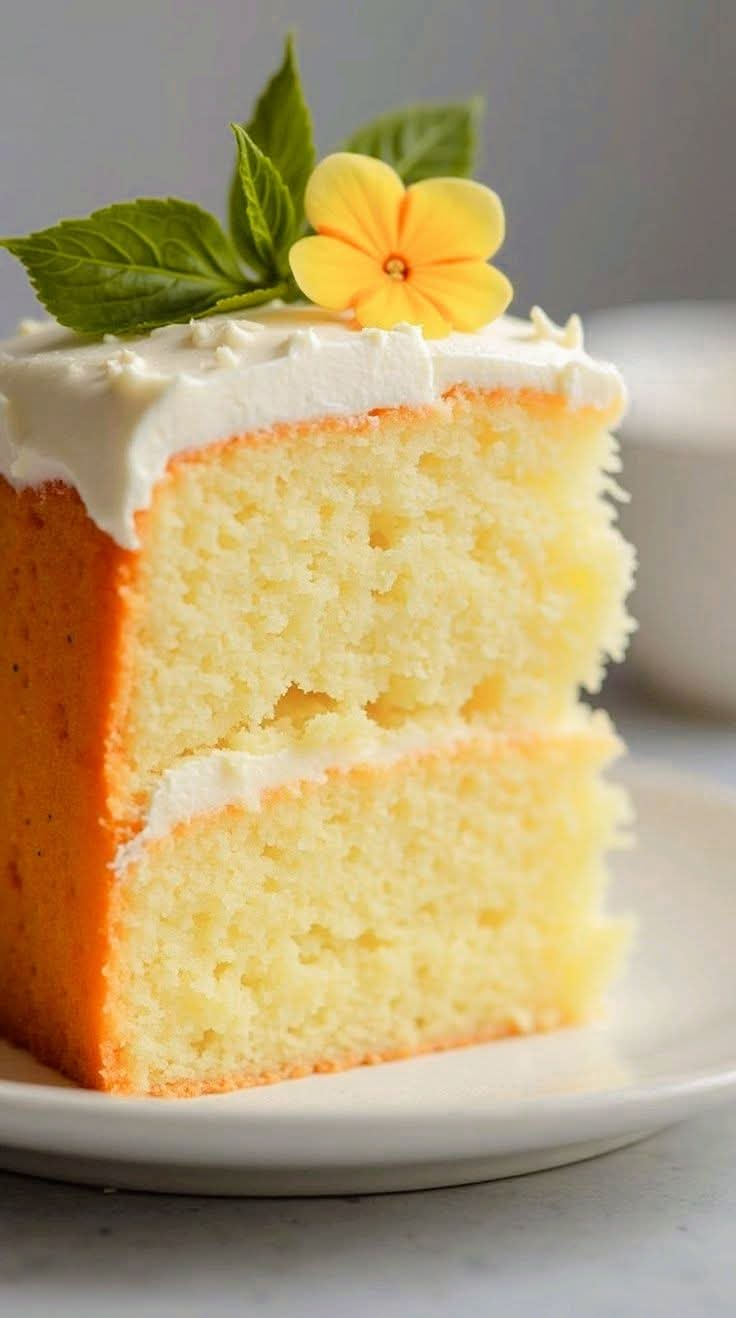Sure! Here’s a long, rich version of a Classic Sponge Cake recipe, complete with introduction, history, ingredients, method, baking science, serving ideas, and a heartfelt touch for cake lovers:
Classic Sponge Cake Recipe: A Timeless Delight
Introduction
The classic sponge cake is a symbol of elegance in the world of baking. Light as a feather, golden in color, and delicately sweet, this cake has stood the test of time, serving as the foundation for countless desserts across the globe. Whether layered with cream and berries, glazed with syrup, or left plain for teatime, the sponge cake never fails to impress.
A Short History of the Sponge Cake
The origins of the sponge cake trace back to the Renaissance period, with early versions appearing in 16th-century Spain and Italy. However, it gained widespread popularity in 18th-century England, especially when bakers began incorporating beaten eggs as a natural leavening agent. Before baking powder became commonplace, the air incorporated into eggs was the magic behind its lift.
By the Victorian era, sponge cakes became a staple at afternoon teas—Queen Victoria herself was known to enjoy a slice filled with jam and whipped cream, giving rise to the “Victoria Sponge.” Today, sponge cakes are cherished worldwide for their simplicity and adaptability.
Ingredients
(Serves: 10–12 slices | Difficulty: Intermediate | Prep Time: 30 minutes | Bake Time: 25 minutes)
- 6 large eggs, room temperature
- 1 cup (200g) granulated sugar, divided
- 1 cup (120g) all-purpose flour, sifted
- 1 tsp vanilla extract
- ¼ cup (60ml) warm milk (optional – adds extra moisture)
- ¼ tsp salt
- ½ tsp baking powder (optional – for a higher rise)
Equipment Needed
- Two 8-inch (20 cm) round cake pans
- Electric mixer (hand or stand)
- Spatula
- Mixing bowls
- Sifter
- Parchment paper
- Toothpick or cake tester
Baking Method
- Prepare the Oven and Pans
Preheat your oven to 350°F (175°C). Grease the bottoms and sides of two 8-inch round cake pans. Line the base with parchment paper to ensure easy removal after baking. - Separate the Eggs
Carefully separate the eggs. Place egg yolks in one large bowl and egg whites in another. Make sure no yolk gets into the whites. - Whip the Egg Whites
Add salt to the whites and beat on medium-high speed until foamy. Gradually add half the sugar (about 100g) and beat until stiff, glossy peaks form. This incorporates air and structure—vital for a good rise. - Whisk the Yolks
In a separate bowl, beat the yolks with the remaining sugar until the mixture becomes thick, pale, and ribbon-like. Add the vanilla extract and warm milk (if using) and mix gently. - Combine the Mixtures
Gently fold the whipped yolks into the stiff egg whites using a spatula. Use slow, sweeping motions to maintain the volume. - Add the Dry Ingredients
Sift the flour (and baking powder, if using) over the mixture in batches. Gently fold after each addition. Be patient—rushing this step can deflate your batter. - Bake the Cakes
Divide the batter evenly between the two prepared pans. Bake in the center of the oven for 22–25 minutes, or until the tops are golden and a toothpick inserted in the center comes out clean. - Cool and Finish
Allow cakes to cool in pans for 10 minutes, then run a knife around the edges and invert onto wire racks. Peel off the parchment and let cool completely.
Serving & Presentation
- Classic Style: Fill the cake with fresh whipped cream and sliced strawberries, raspberries, or peaches. Dust with powdered sugar.
- Victoria Sponge: Spread raspberry jam and whipped cream or buttercream between layers.
- Tropical Twist: Layer with mango curd and coconut cream.
- Simple Elegance: Serve plain with a cup of tea.
Cake Science & Formation
A sponge cake relies heavily on air incorporation rather than chemical leaveners. The proteins in eggs trap air when whipped, which expand during baking to give the cake its volume and airy crumb. Flour provides structure, and gentle folding ensures the batter remains light. Warm milk (optional) helps melt the sugar and proteins together, creating a soft texture and enhancing flavor.
The optional baking powder can give an extra lift, especially helpful in humid climates or when working with older eggs.
Lovers of Sponge Cake Say…
Bakers and dessert lovers alike cherish this cake for its:
- Versatility: It’s a blank canvas—decorate it with ganache, mousse, or buttercream.
- Elegance: Light yet indulgent, perfect for birthdays, weddings, or tea parties.
- Nostalgia: Many associate sponge cake with childhood memories and family celebrations.
“Every bite brings warmth, sweetness, and a taste of tradition.”
Conclusion
The classic sponge cake is more than just a recipe—it’s a tradition. From its humble beginnings to its royal status on Victorian tea tables, it has been lovingly passed down through generations. Whether you’re baking it for a loved one, a special event, or just a quiet afternoon, it always delivers joy.
So preheat that oven, crack those eggs, and start folding—because your perfect sponge awaits.
Would you like a printable or stylized version of this recipe as well?
